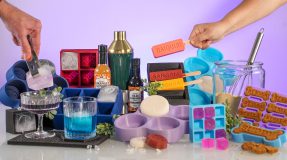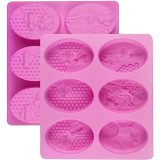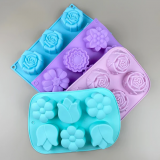Silicone molds are amazing tools for creating various items. These molds are useful in many hobbies and professions, from baking cakes to crafting jewellery. But, did you ever wonder what type of silicone is used for making these molds? This article will explore the different type of silicone is used for molds. We will also learn why silicone is a popular choice.
Why Use Silicone for Molds?
Silicone is an adaptable, strong, and non-poisonous material. It can endure high temperatures and doesn’t respond to most synthetic compounds. This makes it ideal for mold making. Whether working with hot baking fixings or cold gum, silicone molds can handle everything. They are likewise extremely simple to clean, which is a huge upside for anybody utilizing them routinely.

Types of Silicone for Molds
There are a few types of silicone used for making molds. Each type has its extraordinary properties. We should investigate the most widely recognized ones.
Tin-Cure Silicone
Tin-cure silicone, otherwise called buildup fix silicone, is one of the most famous kinds of silicone for mold making. Here are a few key elements:
- Practical: Tin-fix silicone is normally less expensive than different kinds of silicone. This settles on it an incredible decision for fledglings or those on a tight spending plan.
- Quick Relieving Time: This silicone fixes rapidly. You can frequently eliminate your cast from the mold within a couple of hours.
- Flexible: Tin-fix silicone functions admirably with different materials, like mortar, wax, and a few tears.
Platinum-Cure Silicone
Platinum-cure silicone, otherwise called expansion fix silicone, is another well-known decision. It enjoys a few benefits:
- Sturdy: Platinum-fix silicone mold last longer than tin-fix silicone molds. They don’t debase as fast, even with continuous use.
- Safe for Food: This type of silicone is frequently used for food molds since it is non-poisonous and protected to use with food items.
- High Heat Resistance: Platinum-cure silicone can endure exceptionally high temperatures, making it ideal for baking and other high-heat applications.
Choosing the Right Silicone for Your Mold
Since it is now so obvious about the two primary kinds of silicone, how would we pick the right one for our undertaking? Here are a few elements to consider:
Reason for the mold
Ponder why you will use the mold. Assuming you are making molds for baking or cooking, platinum-fix silicone is the most ideal decision since it is food-safe and intensity-safe. If you are making molds for creating, for example, for tar or mortar, tin-fix silicone may be a decent choice because of its lower cost.
Budget
Consider the amount you will spend. Tin-fix silicone is more reasonable, making it an extraordinary decision for novices or those on a strict spending plan. If you can bear to spend a smidgen more, platinum-fix silicone offers better strength and flexibility.
Lifespan
How long do you want the mold to endure? On the off chance that you want a mold that will keep going for some purposes, put resources into platinum-fix silicone. On the off chance that you just need the mold for a couple of undertakings, tin-fix silicone ought to do the trick.
Steps to Make a Silicone Mold
Making a silicone mold can be a tomfoolery and remunerating project. Here are the fundamental stages to kick you off:
Accumulate Your Materials
You will require silicone (tin-fix or platinum-fix), a mold box or compartment, a model of the thing you need to project, a blending holder, and a mixing stick.
Set up the mold Box
Place your model in the mold box. Ensure it is secure and doesn’t move around.
Blend the Silicone
Adhere to the guidelines on the silicone bundle. Typically, you should combine two sections as one. Mix the combination completely to keep away from bubbles.
Pour the Silicone
Gradually pour the silicone over your model in the mold box. Ensure the silicone covers the whole model and fills the mold box.
Allow it To fix
Permit the silicone to be fixed as per the directions. This typically requires a few hours.
Eliminate the mold
When the silicone is completely restored, cautiously eliminate it from the mold box. Then, take out your model. Your silicone mold is currently prepared to use!
![]()
Tips for Using Silicone Molds
Using silicone molds can be simple and tomfoolery on the off chance that you follow a few basic hints:
- Use a Delivery Specialist: At times, eliminating your cast from the mold can be hard. Using a delivery specialist can make this cycle more straightforward and forestall harm to your mold.
- Stay away from Air pockets: While blending silicone, attempt to try not to make bubbles. Air pockets can destroy the smooth surface of your mold. Mix delicately and pour gradually to limit bubbles.
- Clean Your Molds: After each utilization, clean your molds completely. This assists with keeping them in great mold and guarantees they last longer.
Final Words
Silicone molds are staggeringly valuable and flexible. They can be used for baking, creating, and numerous different undertakings. The two principal types of silicone used for molds are Tin-Cure Silicone and Platinum-Cure Silicone. Each enjoys its benefits and weaknesses.


